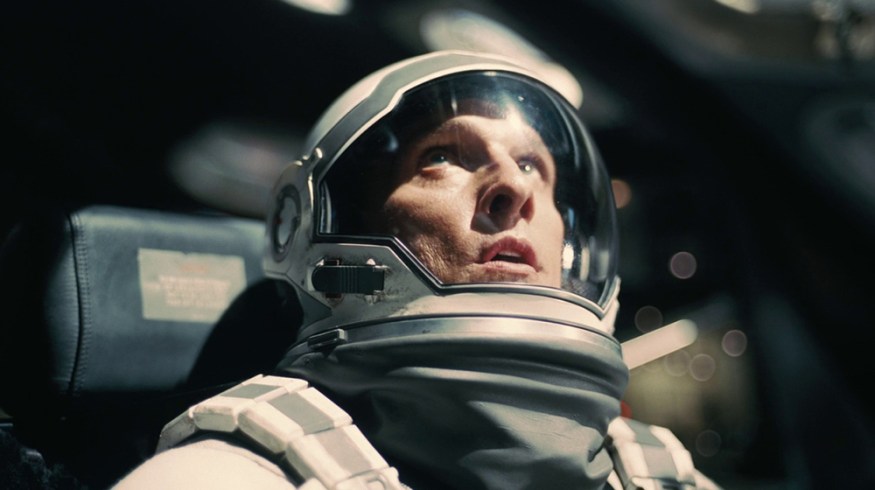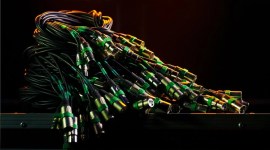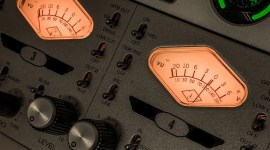
Understanding Diegetic Sound and Non-Diegetic Sound in Film
Whether it is dialogue, sound effects, or music, solid audio can make or break the effectiveness of storytelling. You may come across the terms Diegetic and Non-Diegetic sound. But what do they mean?
Both diegetic and non-diegetic sound are what make up the sound design in a film. This can be from the dialogue (on-screen and off-screen), sound effects, and music (the movie score or music that may occur in the story world).
Here’s a little etymology behind the word “diegetic.” The word derives from the Greek word “diegesis,” meaning “to narrate.” The form of storytelling through narration provides the audience with a glimpse into that world with the use of words.
But what’s interesting is that sound has also become an essential element in getting that glimpse into the fictional world. As film has progressed over time, the introduction of post-production sound effects and movie scores is, in a way, a form of narration to the audience.
But what is the difference between the two?
Diegetic Sound
Diegetic sounds are the sounds that come from the story world. These sounds don’t necessarily have to be on-screen. If the audience understands that it comes from within the film, then it would be classed as diegetic sound.
Dialogue is one of the primary sources of diegetic sound, but diegetic sound effects range from doors being slammed to cars passing by. Essentially, any sound that the character would hear in their environment comes under diegetic sound. Music can also be in this category. A character may be playing an instrument, singing, or listening to the radio while driving.
Non-Diegetic Sound
Non-diegetic sound is quite the opposite: sounds that don’t come from the story world. These sounds don’t appear in the character’s sound environment, so they won’t be able to hear them. The most obvious non-diegetic sound would be the movie score.
Another example of non-diegetic sound is narration. Additionally, specific sound effects may come under this category. These would be added in post-production to enhance the drama. The primary function of non-diegetic sound is communication between the filmmaker and the audience. The filmmaker may want to give clues on a specific turning point in the story.
This may come in the form of music or enhancement of sound effects to give that extra boost for those climatic parts.
Bonus: Trans-Diegetic Sound
So what happens if there is a scenario in which both diegetic and non-diegetic sounds combine? Say hello to trans-diegetic sound! The most common scenario for this type of sound to occur is through music. For example, the movie score may segue into the character playing the same tune on an instrument, but in their sound world (or vice versa).
A very famous example we can highlight is from Lord of The Rings: Return of the King. In the scene embedded below, Denethor II has asked Pippin to sing him a song. As the sequence starts, Pippin starts to sing a song called “Edge of Night.” In that moment, in the presence of Denethor II, the music would be classed as diegetic as it’s being produced in-world, and the characters in the composition would be able to hear the music.
We then cut to a number of soldiers from the army of Minas Tirith, most likely heading toward an unnecessary sacrifice. However, Pippin’s song continues from the previous scene into the scene of the army galloping toward death. As the cavalry cannot hear the music, it would be classed as non-diegetic, however, as the music stemmed from a diegetic source, we would now class this as trans-diegetic.
This is an excellent tool for transitioning from one scene to another.
Diegetic Sound Examples
Now we have established what each term means, let’s look at some examples.
Diegetic Music
Music can communicate emotions where words may fail. It can display the unseen to the audience and reveal a character’s inner feelings. Aside from the movie score, music can occur within a film, for example from a radio or a character playing an instrument.
A great example of diegetic music is in Back to Future. Very famously, Marty McFly plays his rendition of Johnny B. Goode before the general public had yet to experience it. It’s a good example is because we have three separate locations within the venue; the stage, the dance floor, and backstage. Everyone within these locations is responding to live music—whether that’s by dancing to it, or covering their ears while making a phone call.
Diegetic Sound Effects
While sound effects could be as mundane as a phone ring, or the closing of doors, they can contribute to the scene’s mood. Sound effects can also anticipate certain situations, like the creek of a wooden floor when walking through a dark and scary-looking house.
The heavy use of sound effects can tell us a lot about the environment of the story world. This inspiring and moving moment is from Norma Rae, directed by Martin Ritt. Norma is a textile factory worker who gets introduced into labor union activities.
As she fights for workers’ rights, the sound environment in the scene is so loud from the machinery that she’s shouting, but her voice isn’t doing enough. In a pivotal moment, she stands on the table with a cardboard sign reading “union.” The machines are overbearing, but with just that display of a single word, the machines gradually turn off. This is a sign of solidarity.
Non-Diegetic Examples
Non-Diegetic Sound Effects
A prime example of this can be found in Edgar Wright’s movies Shaun Of The Dead and Hot Fuzz. He has a staple style that includes exaggerated sound effects that the characters wouldn’t hear in their real-life world. Here’s a scene from Shaun Of The Dead.
When protagonists Shaun and Ed throw objects at the oncoming zombies, you hear this “whoosh” sound. The same goes when the camera pans at the vinyl record. These sound effects really add to the construction of the scene. While the scene has obvious tension and action, Wright still keeps it comedic and light-hearted.
Non-Diegetic Narration
Narration can give the audience an inside perspective of a character’s mind.
The Shawshank Redemption uses first-person narration from the point of view of the character Ellis Boyd “Red” Redding (portrayed by Morgan Freeman). The film is an adaptation of Stephen King’s novella Rita Hayworth and Shawshank Redemption, from which the movie inherits the first-person narration.
Director Frank Darabont became skeptical of using narration due to its common dismissal in film storytelling. But due to Darabont’s response to the novella, he felt that the narration was welcoming and personal. The opening scene draws the audience into Red’s world and tells us much about his character.
Non-Diegetic Music
Out of all the non-diegetic sound that exists, music reigns supreme. It has many functions, like setting the mood of the scene, adding tension, and can help drive a scene forward. An action-packed film may have a score that’s quite dense and percussive. Loud tones of brass and percussion can give the action more power.
But music can also provide that extra romance with some smooth strings, lyrical melodies, and delicate textures. Horror soundtracks are dissonant and jarring, and have those occasional jump-scare moments to insight fear.
The musical score consists of both an original score and a soundtrack. The difference is that the original score is written by a dedicated composer, and soundtracks consist of existing songs.
This classic score example comes from Christopher Nolan’s Interstellar. Hans Zimmer composed one of the most highly regarded scores of the last decade. A particularly incredible scene is the docking scene. The music here, “No Time For Caution,” perfectly displays Cooper’s urgency to dock the spinning and damaged Endurance. The music starts quite distant, and when Cooper reveals he is “docking,” the music intensifies and gradually builds to an explosion of glorifying music.
A soundtrack example can be found in John Hughes’ The Breakfast Club. The use of Simple Mind’s “Don’t You Forget About Me” in the final scene seems to complete the whole movie. At this point, not only does the audience gain more understanding of the characters, but also the characters themselves in the story understand each other. After learning about each other’s profound truths, the song choice seems very fitting for them to not forget one another.
Trans-Diegetic
When finding examples of music used in films, specifically diegetic, the film Amadeus came to mind. This film is about the great composer Wolfgang Amadeus Mozart and his ever-so-crazy life. The music featured in this is all composed by Mozart, but the film has many moments where it could be classed as trans-diegetic.
In particular, when fellow composer Salieri speaks of his music, he plays on his pianoforte. This is diegetic. We then hear an entire orchestration of this piece when he begins to conduct it to himself. This is non-diegetic. It finally transitions into diegetic music again when it flashbacks to him, when he was younger, performing his own opera.
Another example of trans-diegetic music is when Mozart is too ill to compose by himself. Salieri becomes his scribe and transcribes what Mozart is singing. In this scene, we hear snippets of the requiem composed of those instruments he’s composing for.
What is interesting is that this is what Mozart hears in his head. You could argue whether it does count as non-diegetic music or not when we hear those fragments. Composers can listen to music in their heads when writing. You could say that the music is diegetic from his perspective to Mozart’s character. Some food for thought.
As discussed, the sound design and musical elements are super important. Knowing the difference between diegetic and non-diegetic sound can benefit you in filmmaking. It all contributes to the storytelling and the communication between the filmmaker, the characters, and the audience.
PremiumBeat Sound Effects
Ok, there was a lot of mention of sound effects in this list, for all diegetic and non-diegetic sound effects, look no further than our freshly minted SFX library.
On PremiumBeat, you can find over 16,000 sound effects, all available in stereo, 5.1, and ambisonic. These high-quality, immersive SFX can be used in a variety of projects, like AR/VR, game streaming/development, immersive films, ad videos, documentaries, and events. You now have the lowdown on using audio in sonic space, so you just need the sound effects. Check them out here.
Cover photo via Syncopy Inc.
For more on sound, check out the following links.





